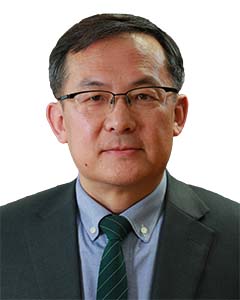In civil proceedings related to intellectual property cases, article 2 of the Supreme People’s Court’s Several Provisions on Evidence in Civil Procedures Involving Intellectual Property Rights explicitly stipulates that the parties shall adduce evidence to prove their claims.

Managing partner
GoldenGate Lawyers
Specifically, in a software copyright infringement case, the plaintiff shall demonstrate two key points to build a prima facie case of infringement: (1) It is the legitimate copyright owner of the software; (2) the defendant’s software is substantially similar to that of the plaintiff’s.
Generally, the persuasion on the first point is straightforward. Unless the contrary is proven, the person whose name is indicated on the certificate will normally be recognised as the copyright owner by the court. In relation to the second point, the court normally compares the source codes of both parties’ works in deciding similarity. However, defendants’ steps to conceal their infringing work makes it difficult for the plaintiff to show substantial similarity.
To tackle these problems, the Higher People’s Court of Beijing released Guidelines on the Trial of Copyright Infringement Cases on 20 April 2018. Among other things, the guidelines provide certain rules on evidence assessment in the software copyright infringement cases, which may be summarised as follows:
(1) In determining “substantial similarity”, the court shall compare the source program of the computer software to which the plaintiff claims its right and the source program of the allegedly infringing computer software;
(2) Where the available evidence proves that the source program, files or other documents of the computer software to which the plaintiff claims its right are identical or similar to those of the alleged infringing computer software, the two pieces of computer software may be determined as substantially similar to each other;
(3) Where the defendant refuses to provide the source program of the allegedly infringing computer software, yet the plaintiff can nonetheless prove that the two object programs are identical or similar, the two pieces of computer software may be determined as substantially similar to each other; and
(4) Although the two object programs are not identical or similar to each other, the object program of the alleged infringing computer software contains certain special content of the computer software to which the plaintiff claims its right, or the two pieces of software generate identical or substantially similar results in respect of interfaces, operating parameters, database structure and the like, the two pieces of computer software may be determined as substantially similar to each other.
To sum up, with comparison of the source programs or the object programs as the primary approach to find copying, courts may follow alternative rules.

Attorney
GoldenGate Lawyers
In the absence of source program or object program, the court may exercise its discretion to take other factors comprehensively into consideration.
Such a flexible approach was vividly demonstrated by Guiding Case No. 49, released by the Supreme People’s Court on 15 April 2015. In SHI Honglin v Taizhou Huaren Electronic Information, a dispute over computer software copyright infringement, the plaintiff alleged that the defendant, without authorisation, copied, distributed and sold a large quantity of software that was the same as that of the plaintiff’s. The defendant argued that it had independently developed the software.
During the first-instance adjudication, the plaintiff was unable to provide the source code of the allegedly infringing software for comparison. As a result, the court of first instance rejected the plaintiff’s litigation requests on grounds that the evidence presented by the plaintiff was insufficient to establish liability.
During the second-instance adjudication, the court specified that:
(1) as the source program and the object program of the allegedly infringing software were controlled by the defendant, it was practically impossible for the plaintiff to introduce into evidence the source program or the object program of the software for direct comparison; and
(2) the probability for two pieces of independently designed software sharing the same defects is strikingly low. Therefore, common defects are in some ways a sure sign of substantial similarity. Following on from the above, the court found it useful to determine whether the plaintiff has established a high probability by establishing whether the works of both parties share the same defects and operational features.
It was then discovered by the appraisal institution that the two software programs did indeed share a same defect. Meanwhile, the court of second instance also noted that both parties’ operating manuals had the same descriptions for the controller functions, technical specifications, and the method of arranging paragraphs.
Based on the above-mentioned information, the court of second instance held that the existing evidence provided by the plaintiff has formed a high probability that was sufficient to have the court believe that the two pieces of software were substantively the same. Accordingly, the court set aside the judgment rendered by the lower court and ruled for the plaintiff.
Interestingly, the standard of proof the court adopted in this case was similar to “preponderance of the evidence” under the common law system, which requires the party bearing the burden of proof to present more convincing evidence than the opposing party or to produce evidence that shows that its version of facts is more likely to be true than not.
Since we are seeing increasingly complex software infringement and a judicial tendency towards strengthening IP protection, it is necessary to properly lower the burden of proof and apply a reasonable standard of proof for rights holders. This tendency has been reflected and affirmed in the “Opinions on Strengthening Intellectual Property Protection”, a top-level official document promulgated by the State Council. To remove the hurdle the right holders may encounter, it is anticipated and welcomed that rather than stick to a rigid approach, courts will be leaning more towards a flexible approach in dealing with the facts-finding issues involved in software copyright infringement cases.
Tim Meng is the managing partner at GoldenGate Lawyers. He can be contacted on +86 10 8589 6931 or by email at tmeng@goldengatelawyers.com
Dong Shi is an attorney at GoldenGate Lawyers. She can be contacted on +86 10 8589 0501 or by email at sdong@goldengatelawyers.com





















